Politics in Estonia takes place in a framework of a parliamentary representative democratic republic, whereby the Prime Minister of Estonia is the head of government, and of a multi-party system. Legislative power is vested in the Estonian parliament. Executive power is exercised by the government, which is led by the prime minister. The judiciary is independent of the executive and the legislature. Estonia is a member of the United Nations, the European Union, and NATO.

The history of Estonia forms a part of the history of Europe. Humans settled in the region of Estonia near the end of the last glacial era, beginning from around 8500 BC.
The Estonian Provincial Assembly or Estonian State Diet, also often called by its Estonian name Maapäev, was elected in May–June 1917 during the Russian Revolution as the provincial parliament (diet) of the Autonomous Governorate of Estonia. On 28 November 1917, after the Bolshevik coup in Russia, the Assembly declared itself the sole sovereign power in Estonia and called for the elections of the Estonian Constituent Assembly. On the eve of the German occupation of Estonia during World War I the council elected the Estonian Salvation Committee and issued the Estonian Declaration of Independence on 24 February 1918.

Otto August Strandman was an Estonian politician, who served as prime minister (1919) and State Elder of Estonia (1929–1931). He was one of the leaders of the centre-left Estonian Labour Party, that saw its biggest support after the 1919 and 1920 elections. Strandman was a key figure in composing the radical land reform law and the 1920 Constitution. He also served as Minister of Agriculture (1918–1919), Minister of Justice, Minister of Finance (1924), Minister of Foreign Affairs and Minister of War (1919). While he was holding the office of the Minister of Finance, he stabilized the economy and managed to avoid hyperinflation. Strandman served as the speaker of the Estonian Provincial Assembly in 1917–1918, and as speaker of the newly independent country's parliament (Riigikogu) in 1921. He was also a diplomat, serving as the Estonian envoy in Warsaw, Poland (1927–1929), and in Paris, France (1933–1939).
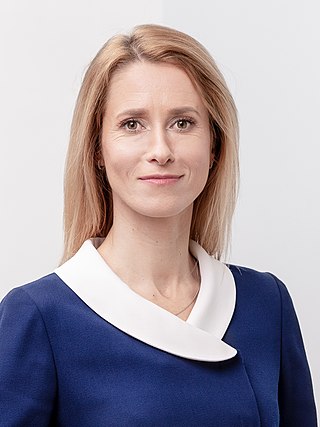
The prime minister of Estonia is the head of government of the Republic of Estonia. The prime minister is nominated by the president after appropriate consultations with the parliamentary factions and confirmed by the parliament (Riigikogu). In case of disagreement, the Parliament can reject the president's nomination and choose their own candidate. In practice, since the prime minister must maintain the confidence of Parliament in order to remain in office, they are usually the leader of the senior partner in the governing coalition. The current prime minister is Kaja Kallas of the Reform Party. She took the office on 26 January 2021 following the resignation of Jüri Ratas.

The Riigikogu is the unicameral parliament of Estonia. In addition to approving legislation, the Parliament appoints high officials, including the prime minister and chief justice of the Supreme Court, and elects the president. Among its other tasks, the Riigikogu also ratifies significant foreign treaties that impose military and proprietary obligations and bring about changes in law, as well as approves the budget presented by the government as law, and monitors the executive power.

Konstantin Päts was an Estonian statesman and the country's president in 1938–1940. Päts was one of the most influential politicians of the independent democratic Republic of Estonia, and during the two decades prior to World War II he also served five times as the country's prime minister. After the 16–17 June 1940 Soviet invasion and occupation of Estonia, President Päts remained formally in office for over a month, until he was forced to resign, imprisoned by the new Stalinist regime, and deported to the USSR, where he died in 1956.
Estonia elects a legislature on the national level. The Riigikogu has 101 members, elected for a four-year term by proportional representation. A head of state – the president – is elected for a five-year term by parliament or an electoral college. Locally, Estonia elects local government councils, which vary in size. Election law states the minimum size of a council depending on the size of municipality. Local government councils are elected by proportional representation too.
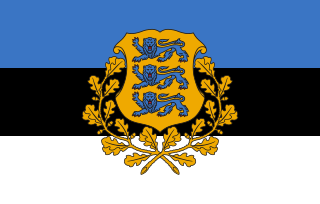
The president of the Republic of Estonia is the head of state of the Republic of Estonia. The current president is Alar Karis, elected by Parliament on 31 August 2021, replacing Kersti Kaljulaid.

Jaan Tõnisson was an Estonian statesman, serving as the Prime Minister of Estonia twice during 1919 to 1920, as State Elder from 1927 to 1928 and in 1933, and as Foreign Minister of Estonia from 1931 to 1932.
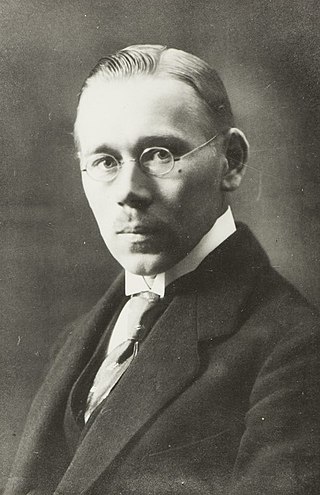
August Rei VR III/1 was an Estonian politician, the Head of State (Riigivanem) of Estonia in 1928–1929, and the Prime Minister in duties of the President of Estonia in the government in exile in 1945–1963.
Constitution of Estonia is the fundamental law of the Republic of Estonia and establishes the state order as that of a democratic republic where the supreme power is vested in its citizens. The first Constitution was adopted by the freely elected Estonian Constituent Assembly on 15 June 1920 and came into force on 21 December 1920. Heavily amended on 24 January 1934, following a referendum in 1933, it was in force until the second Constitution was enacted on 1 January 1938. It remained in force, de facto, until 16 June 1940, when the Soviet Union occupied Estonia and, de jure, until 28 June 1992, when the third and current Constitution of the Republic of Estonia was adopted by referendum.

The history of Estonia from 1920 to 1939 spanned the interwar period from the end of the Estonian War of Independence until the outbreak of World War II. It covers the years of parliamentary democracy, the Great Depression and the period of authoritarian rule.
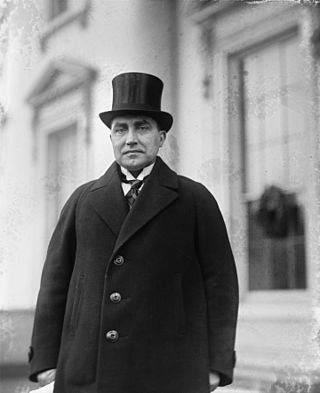
Ants Piip VR III/1 was an Estonian lawyer, diplomat and politician. Piip was the 1st Head of State of Estonia and the 5th Prime Minister of Estonia. Piip played a key role in internationalising the independence aspirations of Estonia during the Paris Peace Conference following World War I.
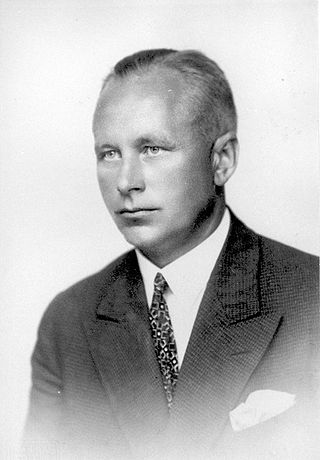
Otto Tief was an Estonian politician, military commander, and a lawyer.

The Estonian Declaration of Independence, also known as the Manifesto to the Peoples of Estonia, is the founding act which established the independent democratic Republic of Estonia on 24 February 1918. Since then the 24 February has been celebrated as the Estonian Independence Day, the national day of Estonia.

Estonia, officially the Republic of Estonia, is a country by the Baltic Sea in Northern Europe. It is bordered to the north by the Gulf of Finland across from Finland, to the west by the sea across from Sweden, to the south by Latvia, and to the east by Lake Peipus and Russia. The territory of Estonia consists of the mainland, the larger islands of Saaremaa and Hiiumaa, and over 2,200 other islands and islets on the eastern coast of the Baltic Sea, covering a total area of 45,339 square kilometres (17,505 sq mi). The capital city Tallinn and Tartu are the two largest urban areas of the country. The Estonian language is the indigenous and the official language of Estonia; it is the first language of the majority of its population, as well as the world's second most spoken Finnic language.

Independence Day, formally the Anniversary of the Republic of Estonia is a national holiday in Estonia commemorating the Estonian Declaration of Independence which was published in the capital city Tallinn on 24 February 1918, establishing the Republic of Estonia. Since then, it has been the national day of Estonia.
The Estonian Chancellor of Justice(Estonian: Õiguskantsler) is an independent supervisor of the basic principles of the Constitution of Estonia and the protector of individual rights. The institution seeks to ensure that authorities fulfil the obligations deriving from the principles of the rule of law and protection of human and social rights, human dignity, freedom, equality and democracy. The Chancellor of Justice is appointed to office by the Riigikogu on the proposal of the President.
Ülle Aaskivi was an Estonian lawyer, politician, and public official. Aaskivi was elected a member of the Estonian Supreme Soviet in 1990 and the Estonian Constitutional Assembly, as well as one of the ratifiers of the Constitution of Estonia who voted for the Estonian restoration of Independence. She was elected to the Riigikogu for the Social Democratic Party of Estonia.












